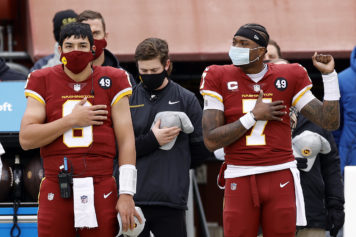
The approved settlement was meant to compensate players diagnosed with chronic traumatic encephalopathy (CTE) and other neurological disorders between 2006 and this July, according to The Guardian.
The matter has the potential to deliver a devastating blow to the NFL, whose stock in the eyes of much of the public has begun to fall as the extent of player brain injuries becomes more well-known. Indeed, officials for youth football leagues have been reporting a drop in player enrollment.
The financial settlements would help players currently experiencing symptoms of neurological disorders to pay for treatments or money would go to the families of former players who died from them.
But the settlement is being criticized by some players who find the amount “insufficient” and because some players were not included.
A federal judge yesterday listened to arguments addressing the players’ claims.
U.S. Judge Anita Brody, who issued the preliminary approval in July, said she was skeptical that the fund would be enough to cover the potential neurological conditions of men who retired from the league. She initially rejected the NFL’s $765 million settlement in January due to the same skepticism. She was particularly concerned about the players who are diagnosed in the future that wouldn’t benefit from this settlement. She noted that the league would have to pay up to 20,000 men for 65 years, according to The Guardian.
She agreed to the preliminary settlement after the NFL lifted its $675 million cap on payments.
“Even if only 10 percent of retired NFL football players eventually receive a qualifying diagnosis, it is difficult to see how the monetary award fund would have the funds available over its lifespan to pay all claimants at these significant award levels,” Brody wrote.
The majority of players involved in the suit were okay with the terms of the settlement, but in October, at least 11 objections against the settlements were filed. The objecting players are contesting that the money is only being awarded to players who had CTE and died within a certain timeframe.
A three-level system is considered when determining the how much is paid out. Players suffering from amyotrophic lateral sclerosis (ALS), or Lou Gehrig’s disease, would receive payments of $5 million. Those who showed signs of brain trauma or CTE when they died would receive up to $4 million and certain dementia cases could receive up to $3 million. Awards are adjusted for how long the player was in the league and age when diagnosed, according to The Guardian.
Players that opt out can pursue individual lawsuits. The family of the late 12-time Pro Bowl linebacker Junior Seau opted out of the lawsuit. Seau was found to have CTE after he committed suicide in 2012.
The NFL, which brings in an estimated $9 billion per year, has implemented new rules and penalties to try to discourage the helmet-to-helmet hits that are presumed to be responsible for the brain trauma experienced by former players. Players must go through extensive concussion protocols now before they can re-enter games after showing signs of a concussion.


